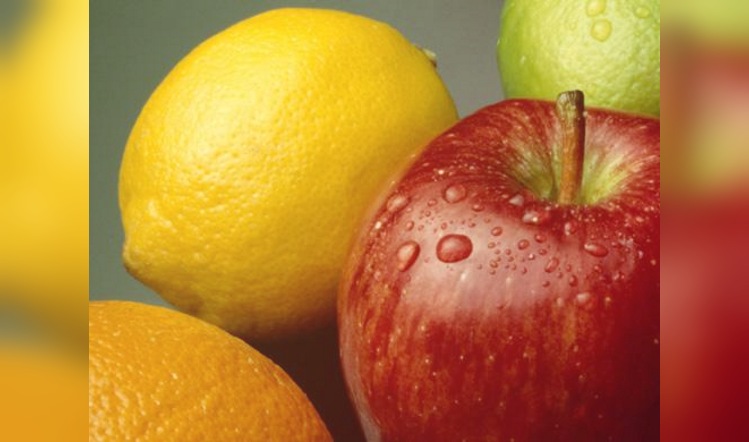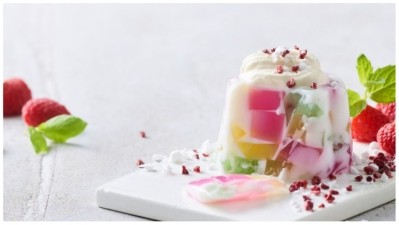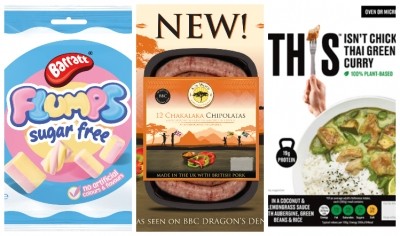Digital feature: long read
Colours feature: Clean label and plant-based lead colours NPD

As consumers increasingly shift toward plant-based diets and new regulations come into force that limit the use of colours deemed too dangerous by food safety bodies, food manufacturers need to be aware of the colours they use and how they will affect the marketing of their products.
Health-conscious consumers are now pushing for manufacturers to use clean-label ingredients and according to Nathalie Pauleau – global product manager for Natural Colours at Givaudan – the quest for natural, clean label alternatives to more synthetically-produced colours remained high on the agenda of most manufacturers. This was made more prevalent at a time when the cost and availability of raw materials remained challenging.
“When it comes to the clean label trend, there’s really no going back,” she explains. “While the cost and availability of raw materials are indeed a challenge, our job at Givaudan is to continue to provide manufacturers with high-performance natural colour solutions that match consumer expectations for visually exciting, clean and clear label food experiences.”
The push for clean-label alternatives is clearly being led by a growing demand from consumers.
Simpler, cleaner ingredients
Kalsec colours technical specialist Caty Meleuc says: “Natural colours derived from fruits, vegetables and other natural sources are increasingly sought-after by consumers. Consumers are looking for simpler, cleaner ingredient statements.
“They want to know and understand the ingredients in the food and beverages they consume. Naturally sourced colours help alleviate consumer concerns regarding synthetic food colours.”
Fermentation has been a route many producers have turned to in order to generate colours that are both vegan-friendly and sustainable. At the heart of these discussions is the generation of natural blues, with manufacturers – especially those in the baking and confectionery sectors – turning to spirulina as their ingredient of choice.
“Natural blues are indeed a core focus, not only for bakers and confectioners, but increasingly for beverage manufacturers as well,” Pauleau continued. “As consumer demand for healthy beverages grows, so has the need for natural blues to be used in such applications as trendy green smoothies or blue lattes.
“Givaudan’s VegebriteTM Ultimate spirulina is of particular interest for such applications because of its extremely clean formulation. A 100% natural, trehalose-free and made using a gentle processing method it can provide the increasingly popular blue shades, which have traditionally been difficult to achieve using natural colours. Derived from blue-green micro algae, the range is gently water-extracted and is trehalose-free.”
Plant-based colours
Besides a focus on clean label, plant-based colours have been in the spotlight as well, coinciding with the gradual increase in consumers choosing a plant-based diet – or one the limits their intake of meat, such as flexitarians.
Beetroot has been rising through the ranks as an ingredient that can perform a double duty as both a recognisable, clean label and plant-based ingredient.
As Sensient Food Colours’ Andreas Klingenberg explains, beetroot is a well-known, traditional vegetable that many consumers recently connect with a ‘superfood’ status due to its nutrient content.
“Beetroot juice that is prepared by pressing the beets and a subsequent concentration process, contains unique red pigments, namely betalains,” he continued. “Formulating with colouring solutions based on beetroot offers products exceptional and distinctive visual appeal.
“Colouring solutions from beetroot are widely used in the market because it’s cost-effective and globally sourced.”
New regulations
While consumer demand for sustainable and plant-based options have been key drivers for the food and drink industry lately, nothing can influence the production of new ingredients more than the regulatory imperative. And nothing can throw a spanner in the works harder than being told the ingredient that you’ve relied on for so long has been deemed unsafe for human consumption by food safety bodies.
A prime example of this was the recent ruling surrounding titanium dioxide (E171), the ingredient used to produce white colouring, which was deemed unsafe for use in foods in the EU. While UK manufacturers may question the effect of EU rulings on their company post Brexit, parity with EU regulations and the potential of exporting to the single market should make producers consider what white colouring they’re using.
One developer that threw its hat into the ring was GNT, whose plant-based Exberry brand of food colours has landed on a clean-label alternative to titanium oxide for hard and soft panned confectionery.
Maartje Hendrickx, market development manager at GNT Group said: “Exberry Shade White – HP Powder is made from rice starch and can be declared on the ingredient list as ‘Coloring Food (rice starch)’ or simply ‘rice starch.’
Replacement for white
“In addition to supporting clean and clear label declarations, it has various performance benefits. The rice starch provides a perfectly even surface, allowing the powder to fill and smooth out even the smallest depressions with no cracks or chipping at the edges. It's also preservative-free with a shelf life of 24 months below 25⁰C and has no yellow or gray tint.”
Searching for a suitable replacement for titanium oxide was high on the list for Givaudan as well. Nathalie Pauleau even claimed Givaudan’s Pure White PWS offered a whiter effect than standard titanium dioxide replacers such as calcium carbonate.
“Pure White PWS can be used both in plant-based protein, such as chicken and white fish analogues, and in confectionery and bakery decoration,” she added.
“Its regulatory status allows it to be used in several geographic areas, including Europe. Our VegebriteTM White colouring foodstuffs can also provide whitening properties in line with labelling requirements in a wide array of applications.”
The world of food colours has advanced past simply needing to create a safe product that is appealing to the eye. With health and wellbeing for both the body and the planet forefront in people’s minds, producers need to be more conscious of what goes in their cakes and confectionery, but producers of colours have proven they have the situation in hand.
Juicy red plant-based burgers
In the wake of Veganuary 2022, demand has increased for plant-based colours to help support the growing number of vegetarian and vegan friendly new product development coming from food and drink manufacturers.
“Whether that’s a burger alternative, plant-based smoked salmon, or vegan fondue, colour has a great role in visually supporting the flavour profile and creating an authentic, appealing look,” said a Sensient spokesman.
“For example, Sensient research has shown that when it comes to plant-based burgers, consumers were 26% more likely to purchase the product when they saw only the juicy red burgers instead of the brown patties. This was further confirmed when they saw both options side-by-side: 63% preferred the more vibrant, red option.”
















